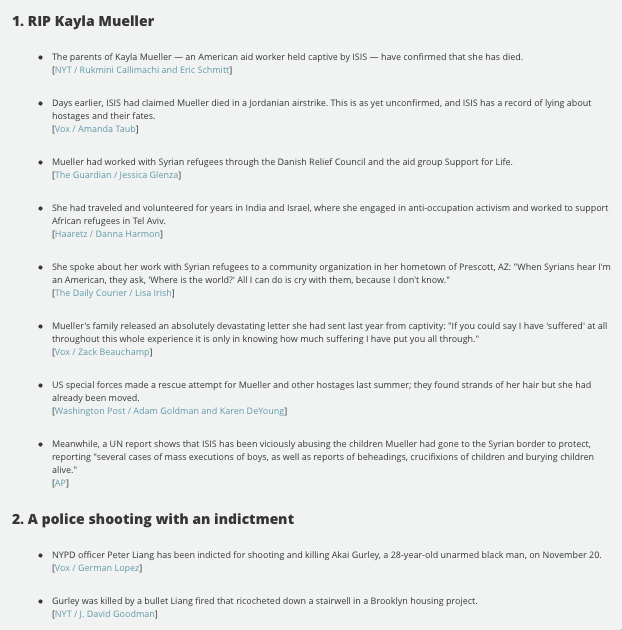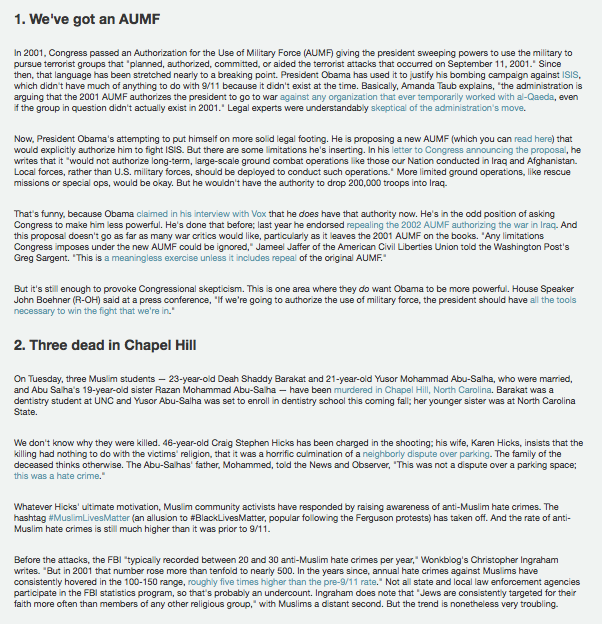
On Wednesday, Vox tried out a different style in its email and asked for feedback. The change: The bullet points were turned into meaty paragraphs, rich with context, links, and something closer to traditional narrative prose. Another screenshot (also with the type shrunk down):

Who doesn’t like context and narrative prose? Well, the readers of Vox Sentences. Last night, Vox ended the experiment when the response was fierce.
Format update: The votes are in, and man, you guys really did not care for yesterday’s Sentences format! It wasn’t even close. 177 people wrote in, and 169 expressed a clear preference one way or the other (many thanks to the very sweet people who said they’d read it in any format). 32 preferred the new version, while 137 liked the old one better.
That’s an 81 percent to 19 percent margin. Dictators win elections by smaller margins than that. We’ll keep experimenting with how we do Sentences — today’s the first day we’ll have pictures in the email version, for example — but for now, it’s back to bullets all the way through.
https://twitter.com/dominicholden/status/565737015170584577
I’d side with the majority here. If you asked me what morning email newsletter about journalism has the most and best content, I’d probably go with the American Press Institute’s Need To Know. But at the same time, some of its formatting and style is so dense that it can be offputting. It’s hard to scan a paragraph like this one from this morning’s edition:

More broadly, it’s a reminder that, for all the buzz around The Email Newsletter Renaissance, we’re still figuring out the formats — length, structure, content — that work. There’s still a lot of space for evolution and experimentation.
2 comments:
Problem is they set the expectation for short bite newsletter and that’s what caused the issue. If they started with the long-form from the beginning then the would have been just fine. Emails and Curation go hand in hand. Just look at BrainPickings.org. The initial expectation just has to be set right and then readers will read that.
In Huxley’s Brave New World, there is a newspaper for the lowest caste called the “Delta Mirror” which consists only of monosyllables.
That seems to be what Vox is aiming at here.
Trackbacks:
Leave a comment